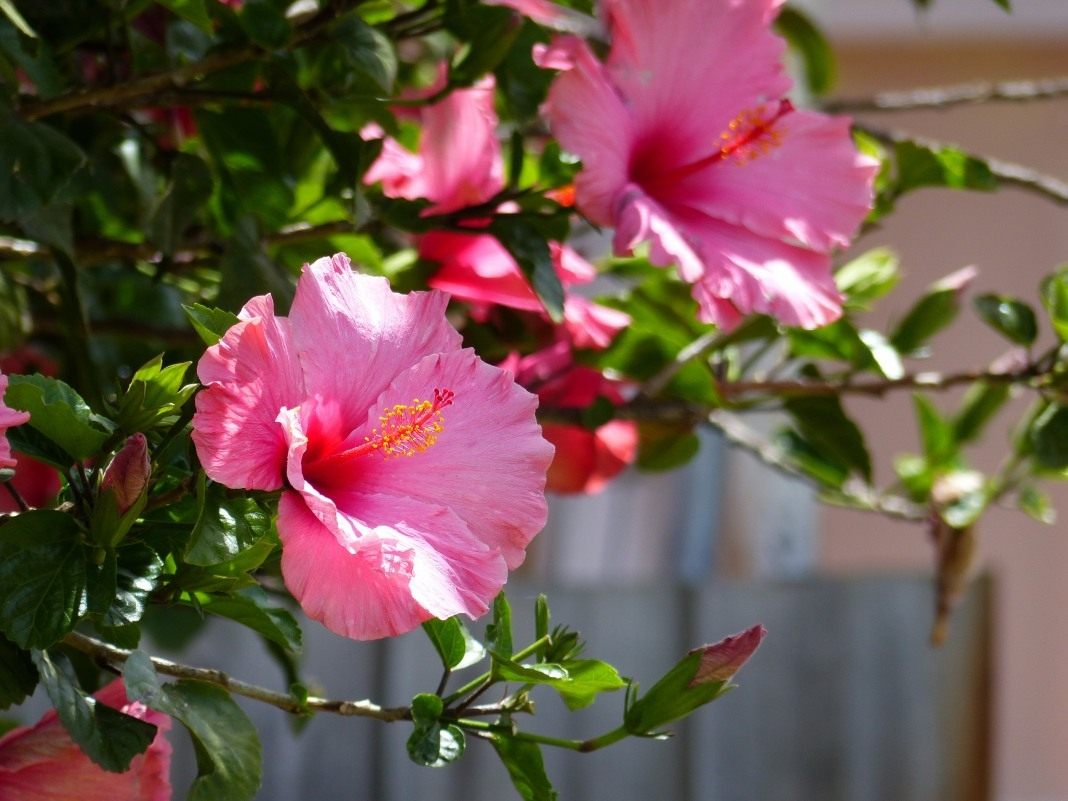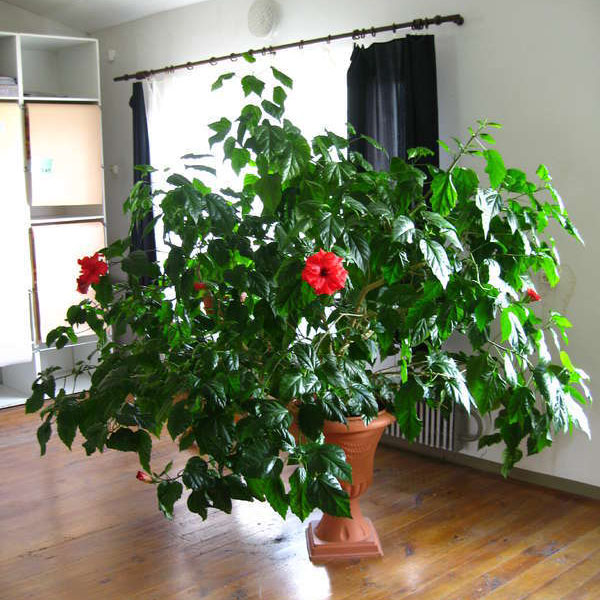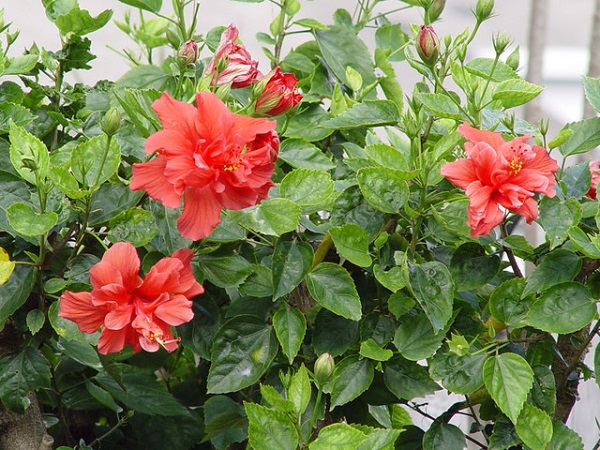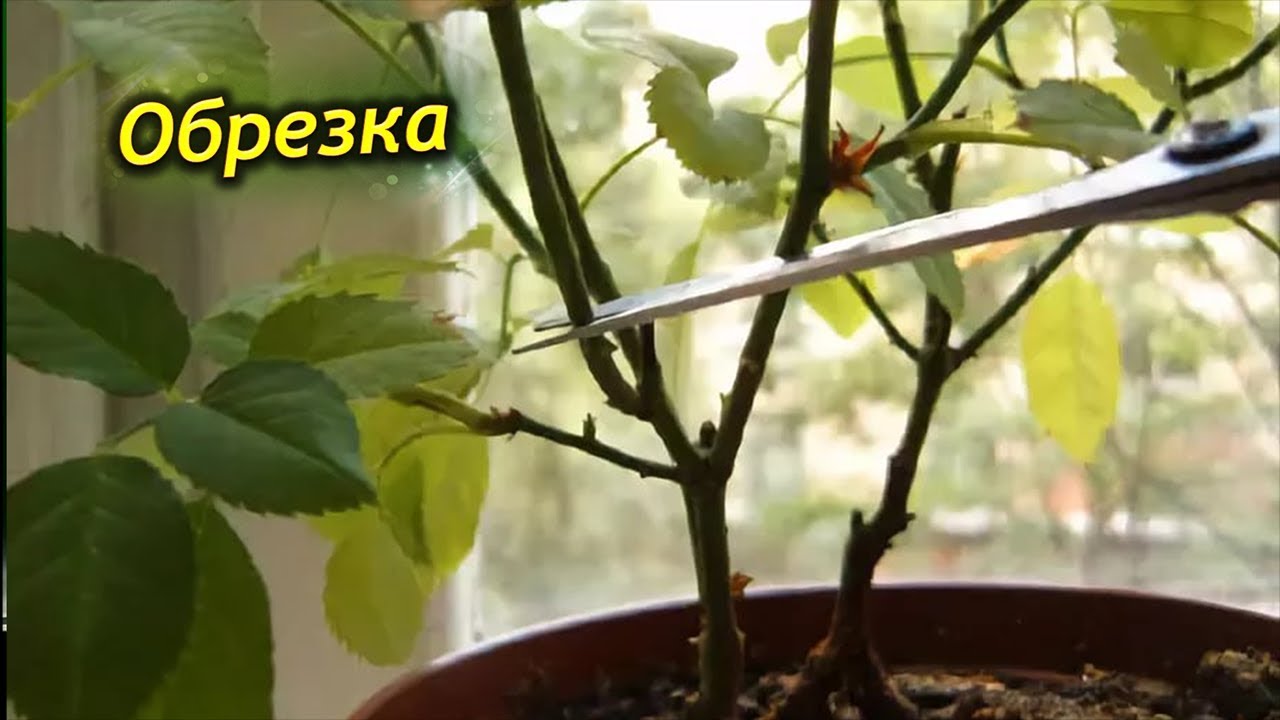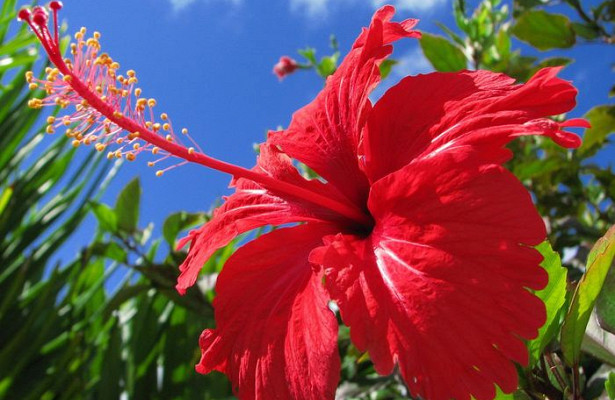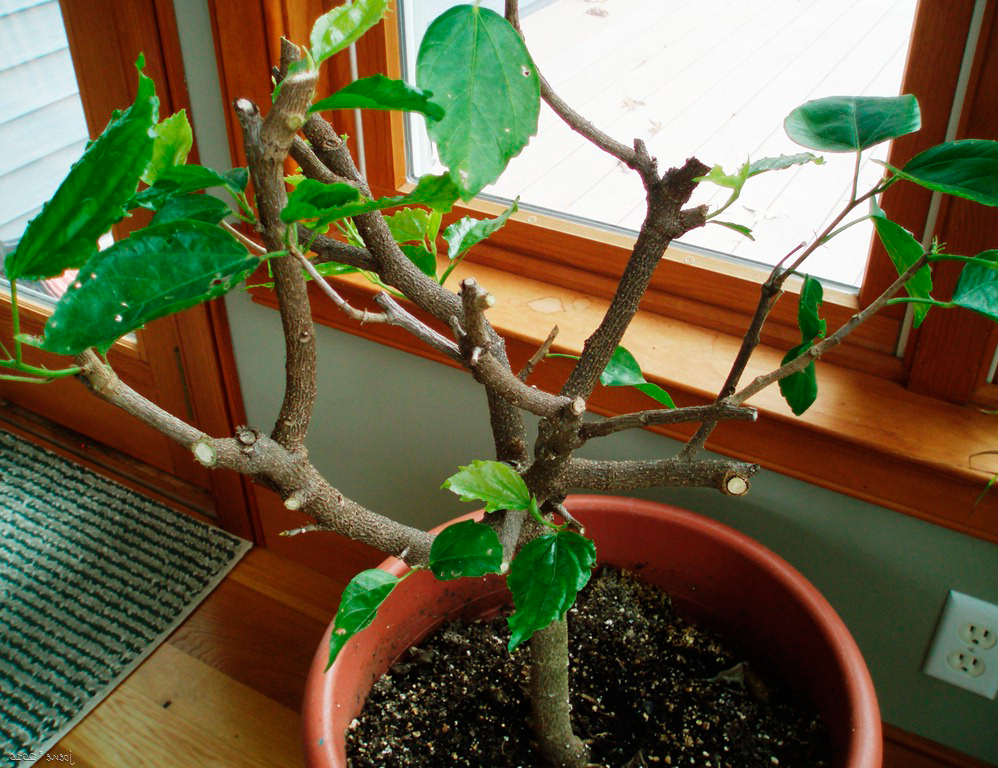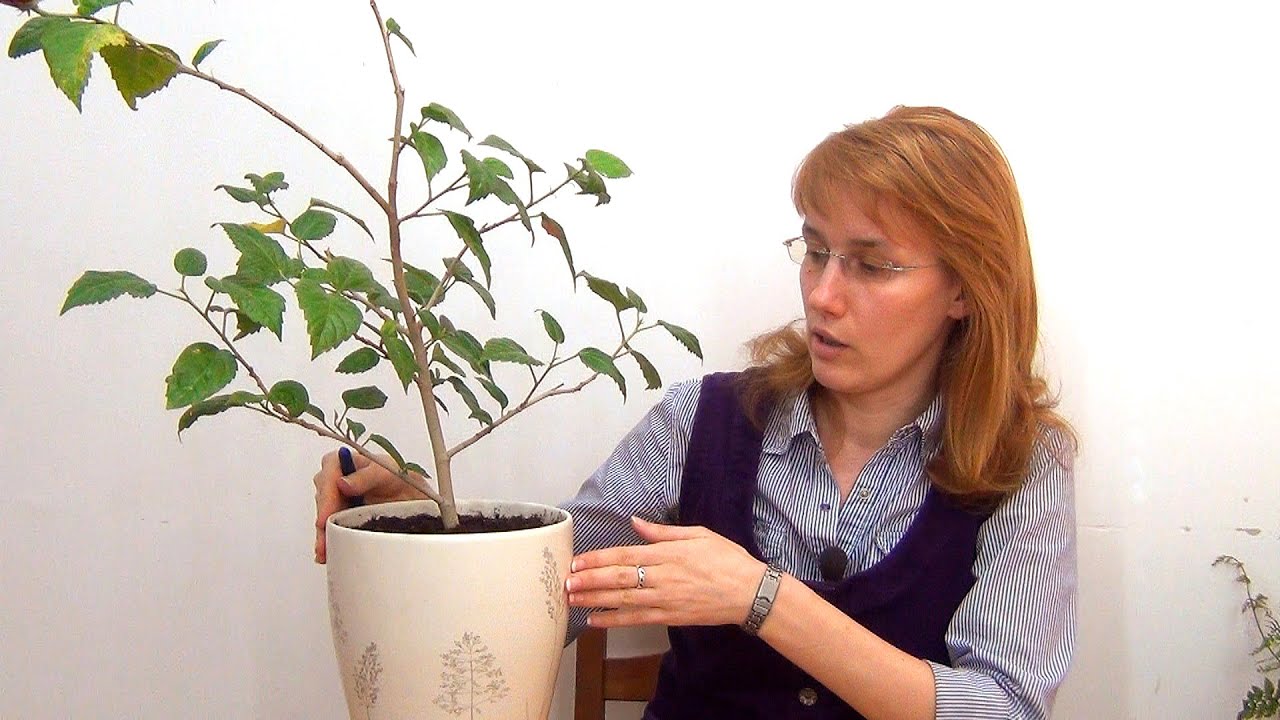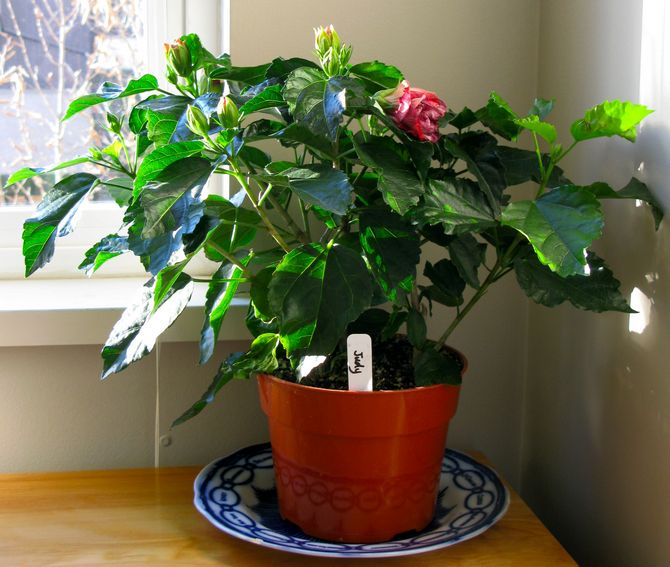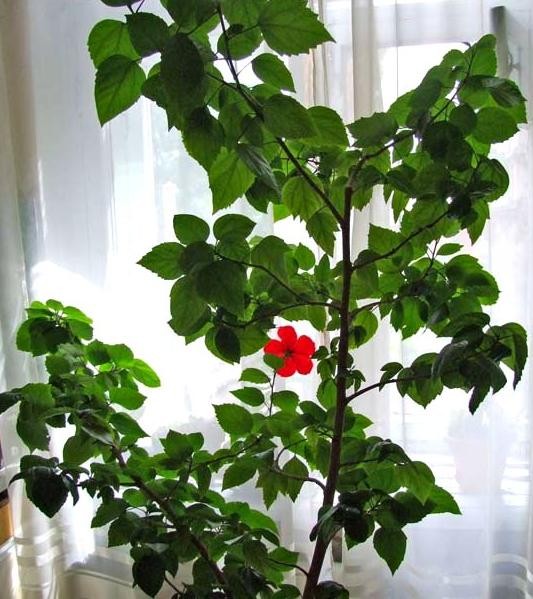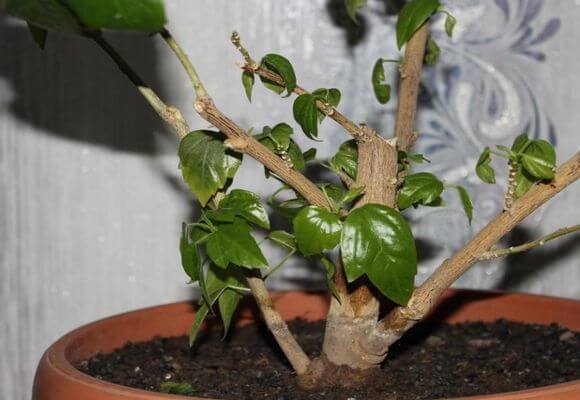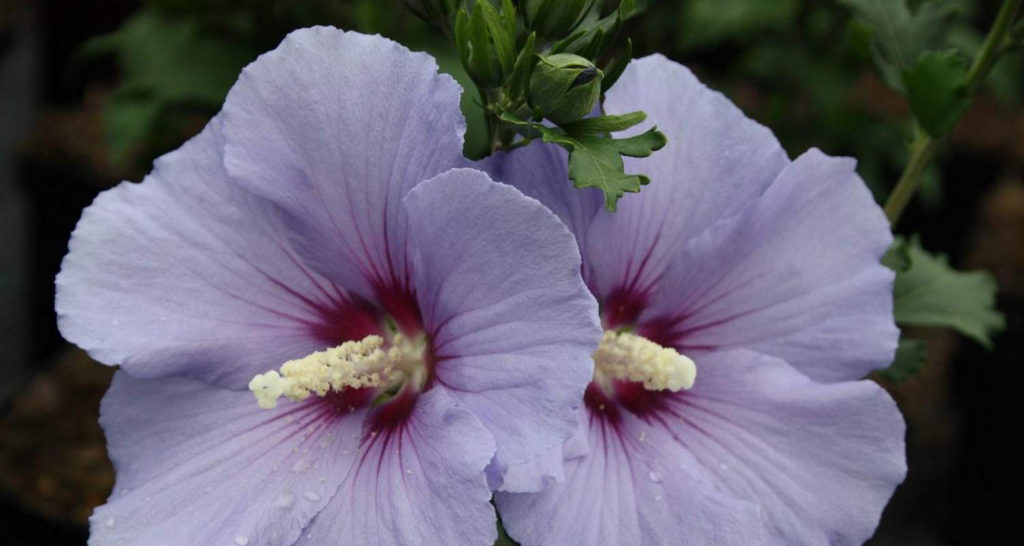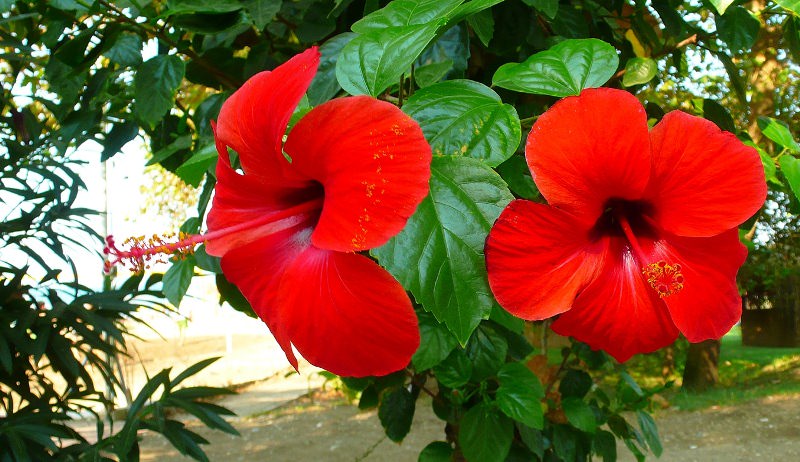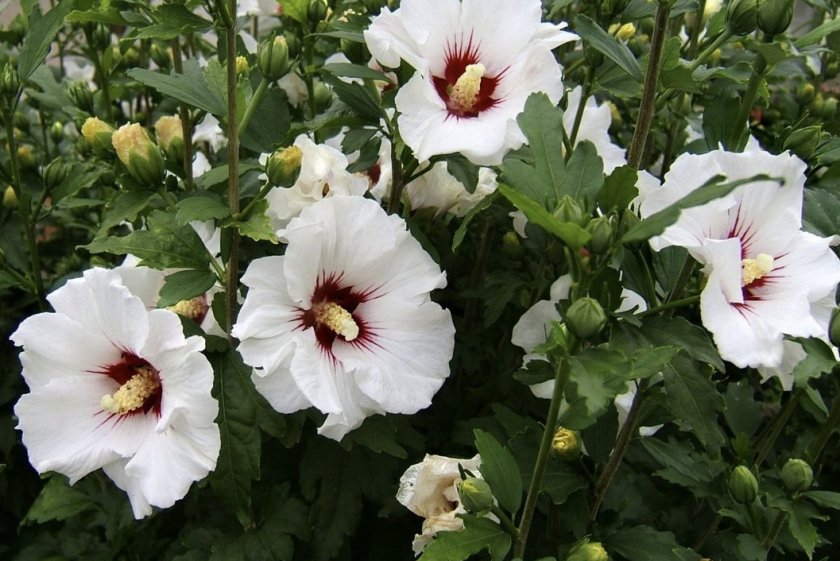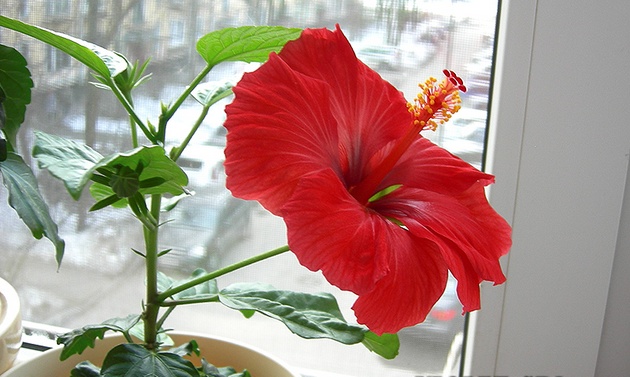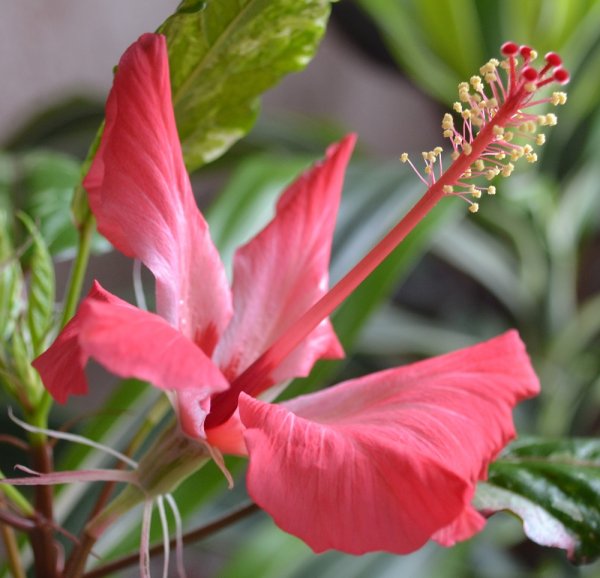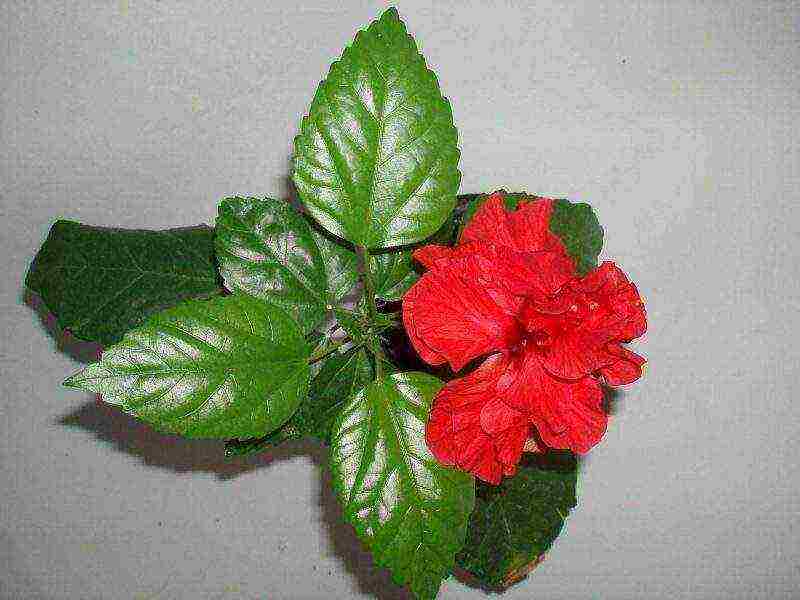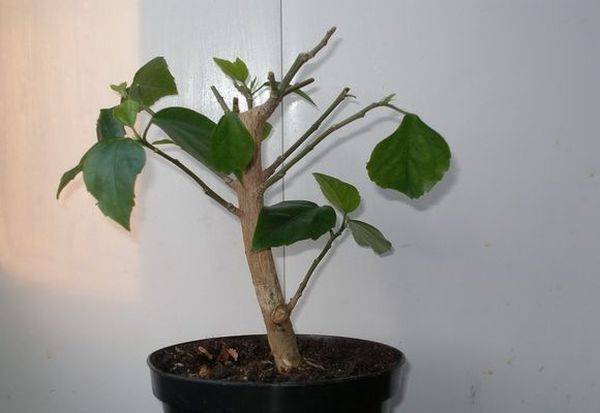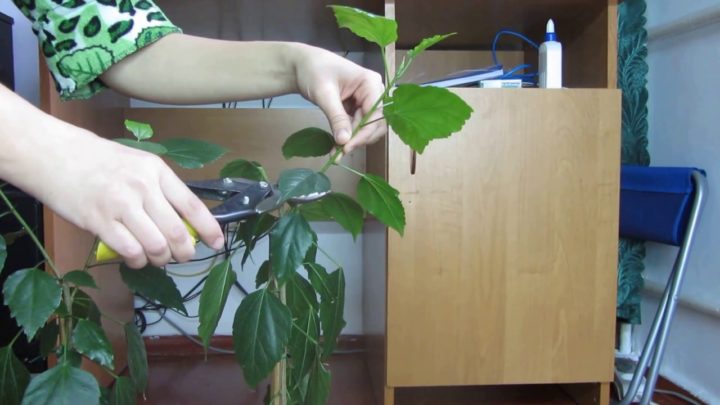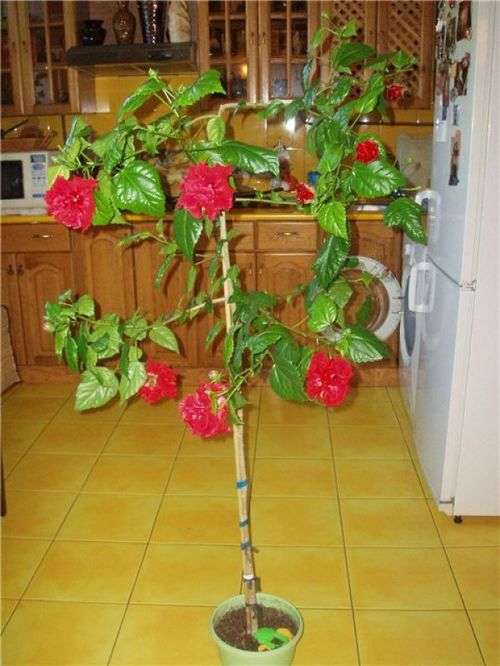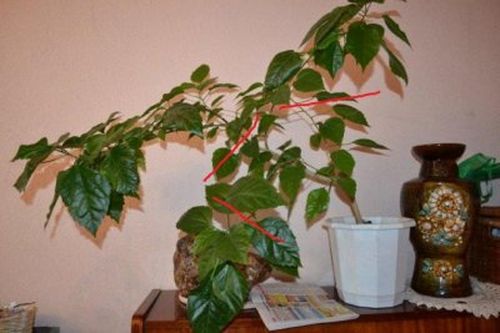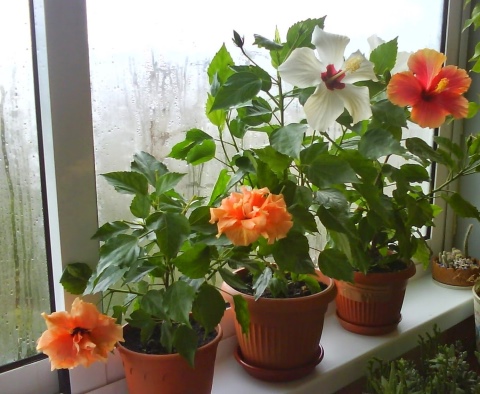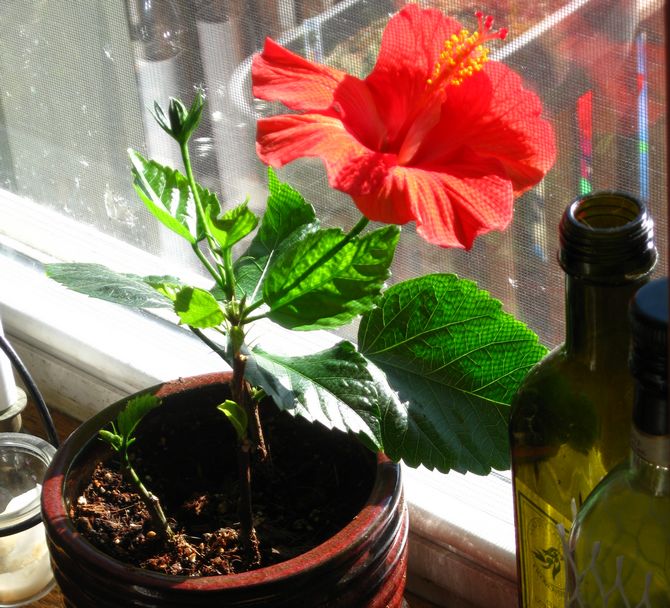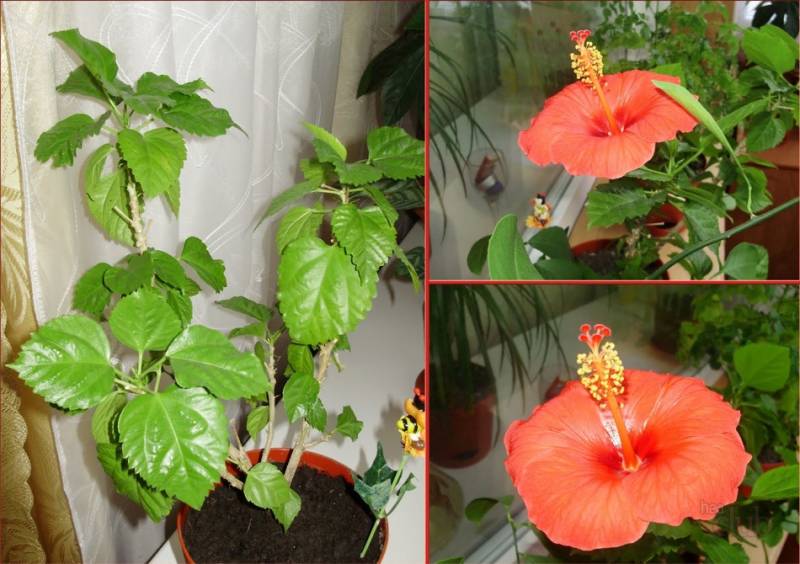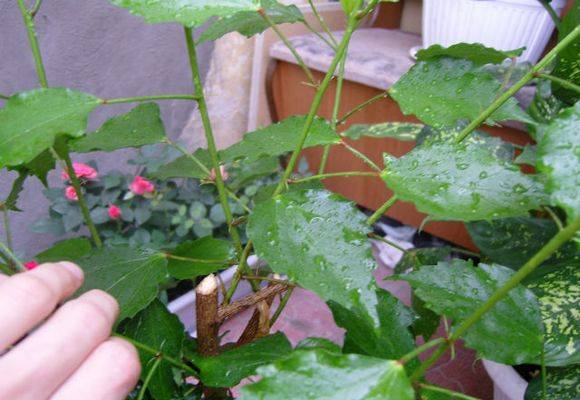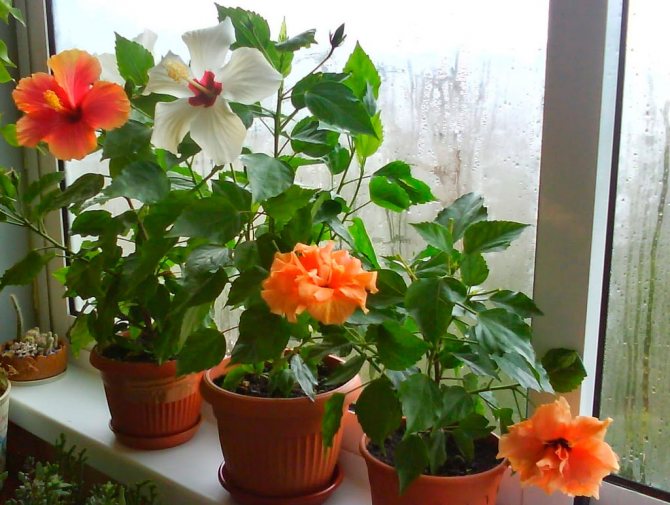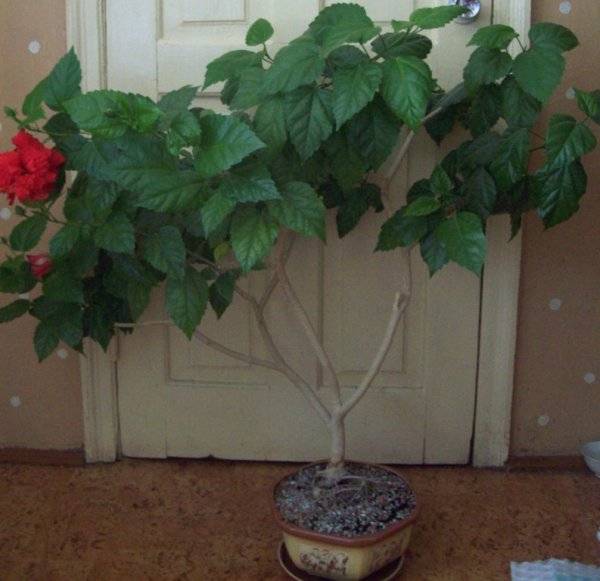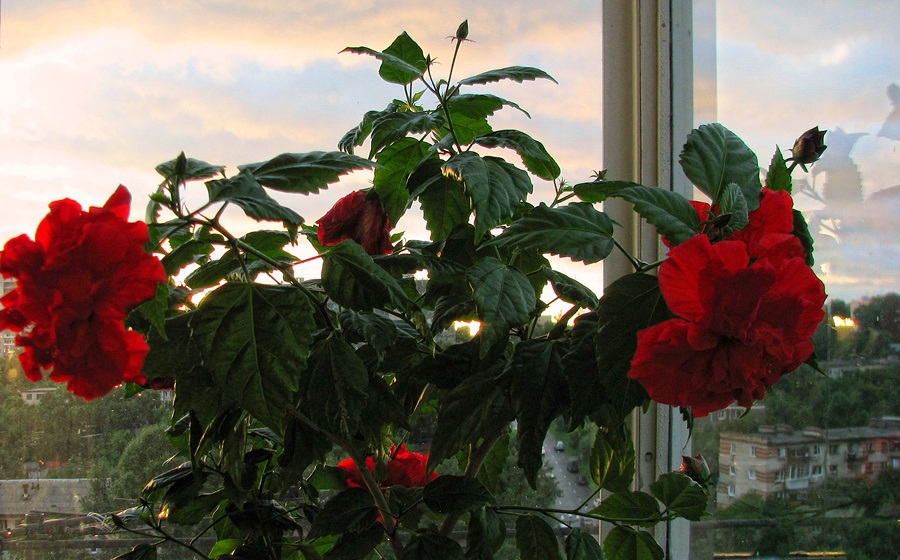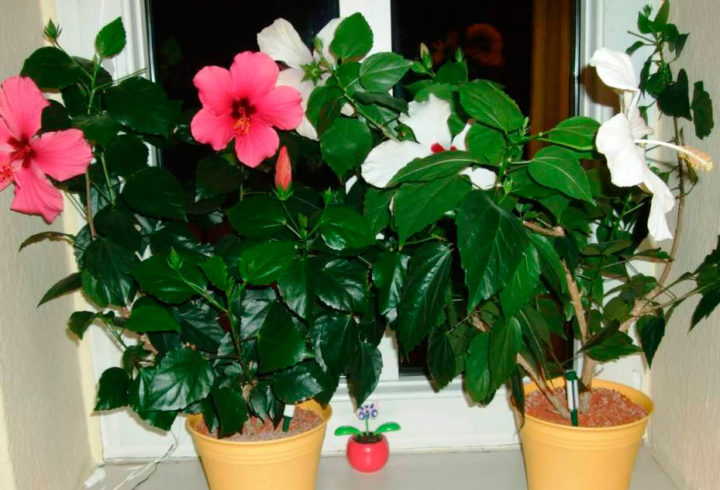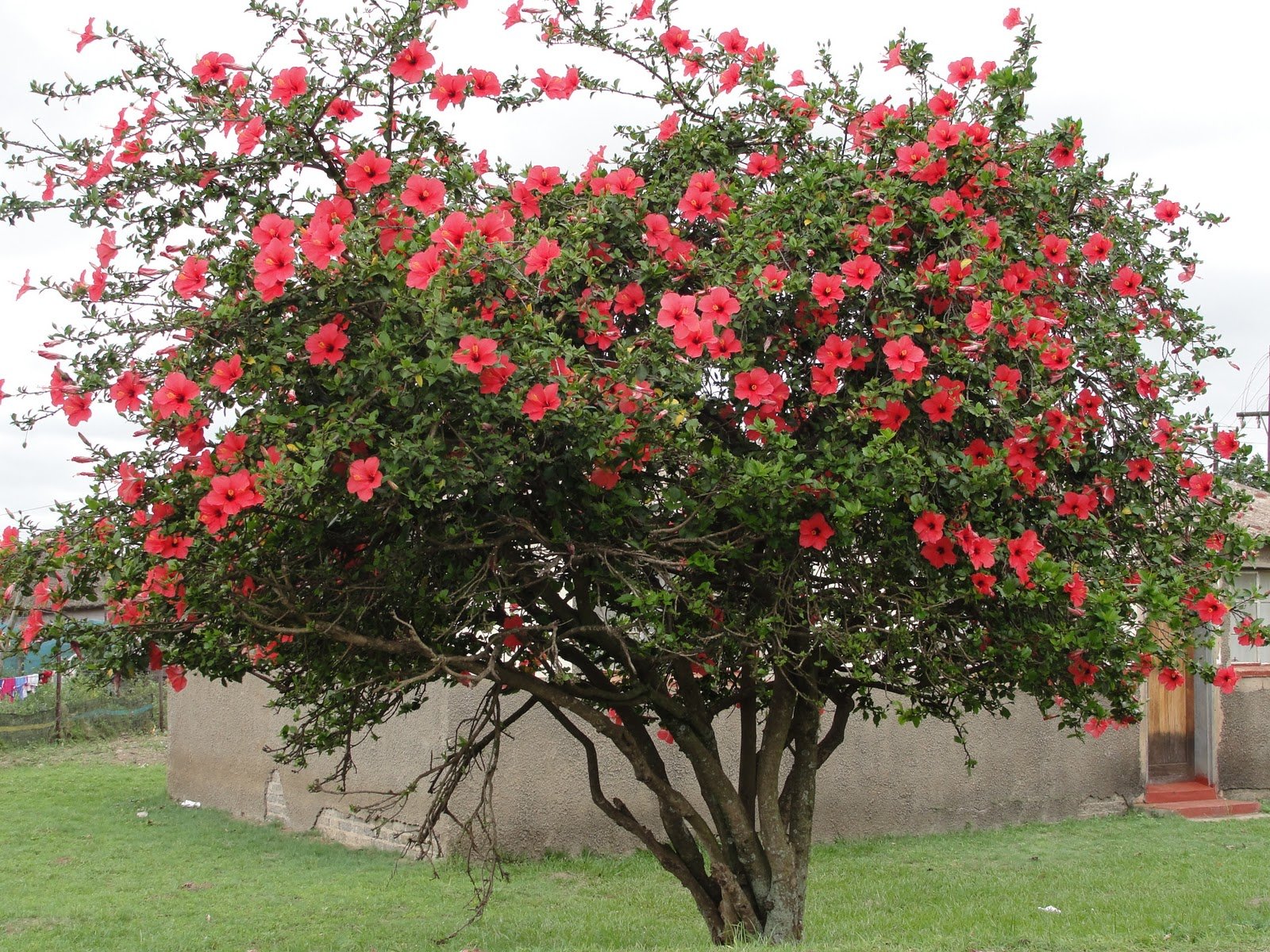How can you propagate hibiscus at home
In ancient Egypt, a completely different plant was called hibiscus - stockrose. The external similarity between these colors is undoubtedly present. But the differences in grooming and reproduction also cannot be overlooked. At home, the Chinese rose can be propagated in several ways. They differ in terms of rooting and the likelihood of seedlings.
Here's how to propagate a Chinese rose at home:
A suitable propagation method for a plant is selected based on the age of the flower, the season and the state of the hibiscus. For example, if one of the branches of a Chinese rose bends to the ground, then you can try the method of rooting by layers. And if the bush itself has grown, then it's time to apply the method of cuttings or using shoots.
There are many ways to propagate a Chinese rose.
Planting a Chinese rose with cuttings
Cutting allows hibiscus to propagate throughout the year. But it is better to carry out this procedure in the spring or summer.
Rooting is an important step in cuttings. For this process to be successful, cuttings must have at least three buds.
Reproduction of indoor hibiscus by cuttings at home occurs in the following ways:
- Placing in a pot.
- Rooting in water.
- With a peat tablet.
For the implementation of these activities, stimulants of the growth of the root system, polyethylene or film, vermiculite, expanded clay and a container for planting may be required.
How to root in water
After watering the plant, all dry and damaged branches are removed from it, and then cuttings 8-12 cm long are cut off. They must have at least two buds and a strengthened bark. The buds and lower foliage are removed from the planting material, and the remaining leaves are cut in half. This technique will reduce the amount of moisture evaporated and increase the chances of a strong sprout taking root.
To maintain optimal humidity in the place where the hibiscus is grown, the rooting cuttings are covered with a cap or polyethylene.
During the entire rooting period, it is necessary to control the water level in the container, periodically adding it.
You can expect the roots to appear after placing them in water for 3-4 weeks. Only after a sufficient number of them have grown and they have grown stronger, should the cuttings be transferred to a container with prepared soil. The soil mixture is made from:
- garden soil with a neutral acid-base reaction with the addition of a handful of clean river sand;
- leaf and sod land in a 2: 1 ratio with the addition of a handful of river sand.
The container for seedlings is chosen from ceramics. Its diameter should not exceed 9 cm. Expanded clay, broken brick, pebbles, chipped ceramics or other suitable materials are laid out on the bottom of the pot. The soil is poured and only then the rooted cuttings are placed in it, carefully spreading the roots. After a week, pinch the top of the plant, stimulating the growth of lateral shoots
For the first 2 months, the pot with the plant should be kept in a warm and bright place. The air temperature in the room should be within + 10- + 30 degrees. With a lack of light or heat, the plant sheds its leaves.
In a pot
This method of breeding hibiscus at home is similar to rooting with water. To implement it:
- Prepare a container for planting with a volume of 200-500 ml, wash it with a solution of laundry soap and pour over boiling water.
- Drainage, soil for indoor plants, and then a layer of river sand 2 cm thick are poured into the bottom of the pot.
- A stalk should be planted in the center of the pot, watering the ground abundantly.
- Pull the bag from above and fix it with an elastic band
- The pot is transferred to a bright and warm place.
The soil in the pot is watered as it dries. Roots appear in 2 months. The seedlings obtained in this way are stronger, since they initially absorb all the nutrients from the soil.
With peat tablet
This method of propagation of the Chinese rose involves growing seedlings in a pot. A peat tablet with a diameter of at least 4 cm is poured with water at room temperature, the cutting is dried and powdered with Kornevin. Then the swollen peat is lightly squeezed out and mixed with vermiculite. Drainage and soil are placed in a rooting container. The stalk is deepened by 2 cm. The container with the sprout is covered with glass or plastic wrap and placed in a lighted place. To prevent the plant from rotting, it is watered as the soil dries up, and aired once every 2 weeks.
With this method of grafting, the roots appear after 2.5 months. The plant can then be transplanted into a new pot. Seedling care is the same as for an adult bush.
How to trim correctly?
All gardeners (even beginners) know that ornamental shrubs need pruning. But not everyone knows how to do it correctly in the spring and after the end of flowering. But this event needs to be approached with all seriousness, like a real medical procedure:
- Before starting work, all equipment must be thoroughly disinfected. This will reduce the risk of plant disease.
- Also make sure the tools are well sharpened. Dull blades will only damage the plant.
Necessary materials
To carry out pruning, you will need a standard gardener kit:
- gardening scissors;
- well sharpened knife;
- lopper;
- hand saw.
All this equipment can be found in the arsenal of any amateur gardener. However, if the tools are old or simply dull, do not be too lazy to bring them into working order.
Step-by-step instruction
So, you have become the proud owner of the most beautiful plant - garden hibiscus. With tenderness and dreams of a lush flowering waterfall on six acres, you planted it in your favorite corner of your garden. When to start maintenance pruning of this still tiny bush:
For young or still very small plants, we carry out the pinching procedure. Its essence is in cutting off the very tops of the branches. This stimulates their growth. We do not touch the main shoot (future trunk) yet.
The next stage of pruning is carried out only after a year. In early spring, we remove the overgrown side shoots again. But now we are shortening the trunk itself - to the fifth kidney. This pruning is done for several years in a row until the plant reaches the size you want.
But now the bush has grown stronger and bigger. It's time to shape its crown. This is called selective cropping. It involves pruning most of the plant.
In this case, it is important to follow certain rules: Cut the branch at an angle of 45 degrees slightly higher than the node, about 5-6 mm. The lower edges of the cuts should look inward of the shrub, and the upper edges outward.
Do not remove too many branches in one pruning, only no more than 2/3 of the entire crown
Otherwise, the plant will weaken.
You need to trim the branches so that the central shoot remains longer than the side branches. And those, in turn, were different in height. This is how a beautiful bush shape is formed.
Sometimes, at the beginning of the season, a complete pruning of the bush is carried out. This is done to obtain a lush summer bloom. With this method, only 2-3 buds are left on the branches.
A diseased or dying plant needs corrective pruning. The shoot must be cut off until young green wood appears. But if the branch is light and dry at the cut site, it means that it is already dead, and it must be removed.
Heavy pruning is only used if the bush is severely damaged or nearly dead. The plant is cut completely to the ground.This is not a guarantee that it will come to life in the new season, but you can still try to revive your favorite flower.
Indoor hibiscus varieties
The hibiscus or Chinese rose is an indoor flower that until recently was only grown in one color - red. Now, thanks to selection, you can see a variety of shades of color. There is a problem with the breeding of these species - they do not retain their maternal species characteristics when grown by seed.
Mix
There are many mixed varieties of hibiscus. These are identical plants that have a different color of the peduncle. Caring for a mixed Chinese rose at home is absolutely identical, no matter what color they are.

Okra
Annual plant with yellow flowers. It is used as a food additive: when ripe, the pods can be pickled, boiled, stewed, and also frozen for the winter.

King
A very capricious variety, especially during the bud-setting period. If you disturb the plant, overflow the soil or underfill water, there will be no flowering - the King will drop the buds.

It is a two-color variety, more often white and pink are combined in a different pattern.

Peduncles are snow-white, double, large. The shape of the tree is columnar.

The variety has large white peduncles and a long yellow stamen - not double.

Bright orange peduncle with a yellow border around the edge of the petals and a long stamen.

Torino
Indoor variety, not higher than 50 cm, which blooms with large orange flower stalks, up to 15 cm in diameter. Not terry.

About pruning and shaping a Chinese rose bush at home
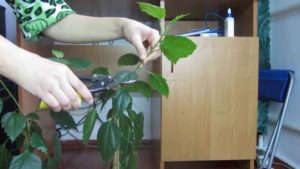
Garden hibiscus or Chinese rose - species, outdoor cultivation
Hibiscus is a pure hibiscus drink without any additives. It is distinguished by its bright red or burgundy color, sweet-sour aftertaste. Made from Sudanese rose flowers. What is the difference between carcade and hibiscus? The plant itself is called hibiscus, and hibiscus is the part of its flower that is used to make a drink.
Hibiscus mutable
How to prune indoor hibiscus?
Indoor hibiscus has a lifespan of 20 years. During this time, the flower grows very much, and you cannot do without pruning. Homemade hibiscus (see photo) can be pruned in fall (September-October) and spring (early March). The main thing is that the flower has time to bloom. But in the summer it is impossible to carry out pruning, as the hibiscus may stop blooming.
An indoor flower can have a wide variety of shapes. They choose them based on personal preferences, interior design and other factors.
Step-by-step master class of crown formation:
- First, you need to cut off all dry shoots. They are no longer viable and only interfere with the flower. It is best to use a sharp garden knife or blade to avoid breaking branches or sawing.
- It is also necessary to remove deformed, damaged and weak branches.
- After all the unnecessary is cut off, it is necessary to carry out a supporting haircut (it is necessary to give the desired shape to the plant).
- Each thin branch is cut to the level of the 3rd bud. And if, after pruning the hibiscus, the crown turned out to be one-sided, then it is necessary to remove all unwanted processes to the base of the flower.
Important! When it comes to sanitary pruning, it is best done in the spring months before flowering. In the case when rejuvenating pruning is carried out, it is necessary to capture not only the branches from the outside, but also the internal ones, removing them by 2/3
No special care for the hibiscus after pruning is required. The flower tolerates the procedure calmly, and after 2-3 weeks new shoots appear.
As a rule, such branches are not viable, they dry out, do not form new buds, and the plant begins to wilt.
Also, an incorrectly selected pruning tool can harm the plant. Garden pruners are very rough and will damage the thin twigs of the hibiscus. As a result, the flower dies. Therefore, when pruning, you should be very careful.
It will also be useful to pinch the flower. This procedure is carried out in early spring. The pinching takes place as follows:
What is hibiscus pruning for?
Indoor hibiscus needs pruning, for this plant such a procedure is mandatory. We will find out the reasons why this procedure should be carried out.
After some time, the shoots may become deformed, uneven or short. To solve this problem, old shoots are cut off, and new ones with the correct shape grow in their place.
Instead of splendor, only old shoots grow on the bush, as a result the plant has poor greenery. After pruning, the bush begins to develop in full force, gives many new green shoots, and becomes lush. But flowering occurs weakly or it may not exist at all, since at first the plant spends all its energy on renewing greenery. Thus, the flower will have a beautiful lush shape.
This procedure is carried out for the purpose of rejuvenation, after a time, dry shoots appear on the plant, they must be cut off so that new shoots appear.
Pruning can be sanitary, in which case it is necessary to get rid of the affected processes, while removing a little healthy part.
In order for the bush to develop well, and the flowering is abundant, pruning is also performed.
Sometimes the roots of the flower are cut off, this procedure is performed very rarely, in such cases when they have grown too much and do not fit in the pot. This must be done with special care so as not to damage the main branches of the roots.
Why prune indoor hibiscus
Pruning is a vital activity for a homemade Chinese rose for a number of reasons:
- Allows you to get rid of deformed shoots - over time, the plant appears curved, deformed and short shoots. If you cut off branches that have an irregular shape in time, new ones will grow in their place in a short time.
- Giving the plant the desired shape. Homemade hibiscus, which grows without proper care, will never acquire lush hair. The plant will spend all its energy on old and sluggish shoots, as a result, the flowering will become poorer, or disappear altogether.
- For rejuvenation. Over time, more and more old branches appear on the plant, proper pruning allows you to remove them, rejuvenate the flower, and give it a charge of new strength.
- Removal of diseased shoots. Timely implementation of "sanitary pruning" allows you to remove damaged shoots (disease, pests) and stop the spread of the problem to healthy parts.
- Root pruning. This procedure is extremely rare, mainly in cases where the roots of the hibiscus have grown too much, and there is not enough space for the flower in the pot. Trimming the root system allows for faster growth and abundant flowering.
Hibiscus pruning rules
There are several requirements for pruning hibiscus. Basically, the rules differ depending on the goals of the pruning.
Crown formation
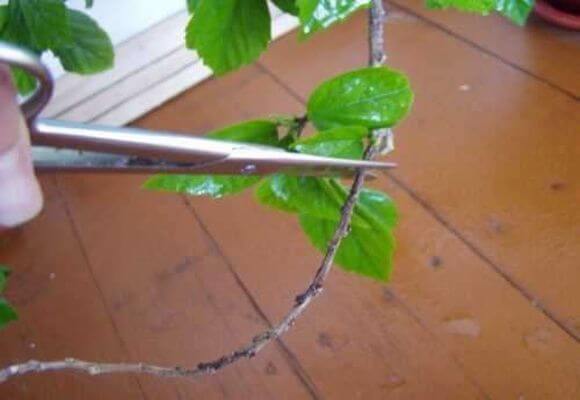
The crown of a hibiscus can be lush or horizontal. A lush crown requires more careful maintenance and frequent pruning. The type of crown is chosen by the owner of the plant, depending on the interior and other parameters.
The main feature of hibiscus is that the height of the plant does not at all affect the splendor of the crown.
It is advisable to trim with ordinary scissors. The branches of the plant are quite thin, the pruner can severely damage them. All dry shoots are removed, as well as branches growing parallel to other branches.
Pruning is done in the spring and also in the fall after flowering. Untimely removal of branches can provoke a growth arrest, new buds and inflorescences will cease to form, hibiscus flowers can appear only on young shoots.
Never prune for crown formation in the summer, otherwise there will be no flowering.
Pinching young shoots
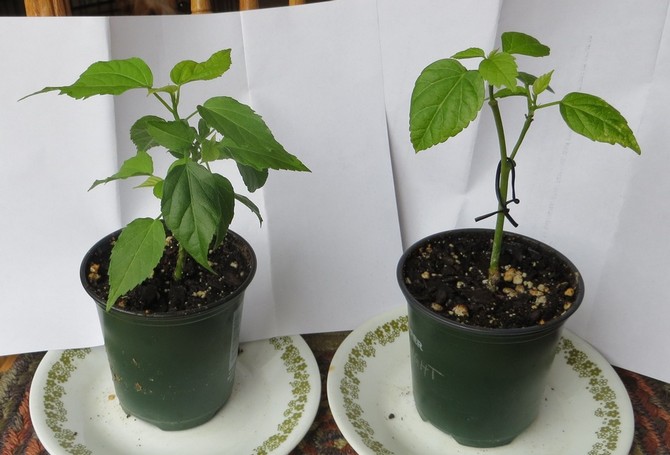
You can pinch all the young shoots of the hibiscus, the procedure will only benefit the plant itself. It is advisable to carry out activities in early spring before the formation of leaves.
- The central shoot of the plant is tied to a support (a bamboo stick can be used as a support, however, an ordinary pencil or knitting needle will do);
- All lateral shoots are cut off, about 5 leaves are left;
- It is necessary to periodically actively feed the plant with nitrogen;
- After the hibiscus grows to the desired length, the crown pinching procedure is performed again - it leaves 5-6 of the most developed shoots;
- Be sure to cut branches parallel to the main shoots, so you can achieve a uniform and lush crown;
- Pruning is done after and before each flowering, preferably using regular scissors.
Shaping haircut
Immediately after planting, all weak, deformed and damaged shoots must be removed from the plant. Pruning allows for even development of the young bush. If, during the growth of the plant, a cardinal pruning is performed, the crown will become more magnificent.
Be patient - it can take more than one year to grow a beautiful flowering plant with a crown of the desired type.
Supportive pruning
It is carried out after the crown of the desired type has been achieved. Maintenance pruning is the removal of weak and dry shoots. All thin branches are cut to the level of 2-3 buds.
Sometimes, over time, the plant acquires a one-sided appearance. The problem is eliminated by removing all unwanted side shoots up to the base of the bush.
Formation of the trunk
After planting the hibiscus, be sure to remove all branched shoots to the level of 2-3 buds. The main well-developed trunk is not cut. With the further growth of the plant in February, all branched lateral shoots are removed to the level of 1 bud, the main trunk is cut to the level of 5-6 buds. Pruning is carried out until the plant reaches the desired height.
The crown is formed from the strongest shoots, further pruning is carried out on several buds. Side growth is constantly removed.
Hygienic pruning
Held in early spring. All growth over the past year is cut by a third. Hygienic pruning allows you to rid the plant of old and deformed shoots, to increase the number of flower buds.
Hibiscus quickly acquires a lush crown, the branches interfere with the normal development of flowers, in this regard, light thinning is periodically necessary.
To stimulate flowering in the spring, annual shoots are also drastically pruned.
Rejuvenating haircut
If the bush begins to grow unevenly and tilts to one side, a rejuvenating shoot of the shoots is carried out. The rejuvenation procedure allows the plant to breathe more freely, stimulates it to form fresh greens.
The rejuvenation procedure is carried out as follows:
- All old and dead shoots are removed;
- The rest of the shoots are shortened by two-thirds.
Pruning should affect not only the outer shoots, but also those that are inside the bush.
To give the plant a beautiful and attractive shape, the branches should be cut to different lengths: the central shoot should be longer than the others, the lateral shoots should be cut at different heights.
Careful care and timely pruning of hibiscus will allow you to get a plant with an attractive crown and abundant flowering.
Consider visually pruning indoor hibiscus in the video
How to form a crown at home?
Formative pruning is the most difficult type of hibiscus pruning.
Purpose of the procedure and the best time for it
The Chinese rose is shaped in order to obtain the desired shape of the crown and the whole plant.The more often the crown lends itself to shaping by pruning, the better the plant will develop and achieve the correct shape.
They begin to form a crown in the spring, at the end of the dormant period of the plant. The hibiscus shape is maintained by selective pruning.
How to properly trim a bush in spring?
The rules for pruning hibiscus depend on what type of crown is supposed to be obtained after the procedure. It can be a lush tree, a branchy shrub, or a miniature bush.
- To form a Chinese rose in the form of a tree, you should:
- Remove side branches.
- Leave a couple of medium branches, shortening them only by 2 - 3 buds. In the future, this will be the main trunk.
- To form a lush bush hibiscus, you must:
- Trim the middle topmost branches. In this case, the lateral buds will begin to form new shoots.
- Shorten the central branch, leaving only a few points of growth.
- To form a lush crown:
- Remove all useless branches: internal, parallel to the main trunk, gnarled, deformed and growing inward.
- Timely cleanse the crown of faded flowers. This promotes the development and budding of new buds.
How to propagate a flower at home?
To breed hibiscus, use:
- seeds;
- share a bush;
- carry out cuttings;
- instill one of the stems.
Below are step-by-step instructions for each method.
Cuttings
Cuttings are the only propagation method for hibiscus that allows propagation all year round. Cuttings are best taken in the spring and summer.
- The mother plant is watered and then pruned (for more information on the recommendations, when and how to prune a Chinese rose correctly, see here).
- Along with cutting off ugly shoots, cuttings are cut - branches with a strong green stem and 2-3 internodes on it.
- The lower leaves are cut off on it to prevent rotting.
- Selected cuttings are rooted in water or soil.
Layers
The method when one of the stems is added is called layering. It applies to the Chinese rose. During reproduction, layering is used:
- air;
- ordinary;
- vertical.
Most often, growers use conventional cuttings, as this method allows you to reduce damage to the parent plant. Choose a branch that is sprinkled with earth, leaving the top intact. In the place where the shoot is covered with earth, roots appear.
The ideal time for propagation of hibiscus by layering is early spring. A prerequisite for choosing a suitable shoot: it must be located above the surface or shallow in it. Before propagating the plant in this way, prepare the soil. They dig it up as deep as possible. After digging, peat and sand are poured.
Attention! To propagate hibiscus by layering, the soil must have good water retention capacity, a drainage layer and an air regime.
- The shoot that is going to bend is freed from the leaves.
- Lay on the bottom of the groove dug out in advance. If it unbends, fix it with wire bows, and then sprinkle it with earth and water it.
- In order for the cuttings to give roots faster, watering should be regular, as the soil in the pot dries out.
- At the beginning of autumn, the cuttings are separated from the mother plant.
- After 2-3 weeks, the upper shoots are cut off so that the root system of the new plant develops well.
Seeds
Seed propagation of the Chinese rose is a less common and unpopular method, as it is ineffective. Propagating it by seeds, flower growers are faced with a complete loss of the varietal characteristics of the plant. How to act for those who want to propagate hibiscus in this way at the end of winter - at the beginning of spring?
- The seeds are soaked in water, in which growth stimulants Epin, Gumat, Zircon, etc. are dissolved. Duration of soaking is 1-2 days. During soaking, mix the seeds in the solution 2-3 times.
- After soaking, they begin to germinate the seeds.To do this, take a damp cotton napkin on which they are laid out, and then wrap it in a plastic bag.
- After 2-3 days, roots will appear on the seeds. They are planted in previously prepared containers with soil (1 teaspoon of peat, ash, leafy earth and sand). The seeds are not buried, watered and cover the container on top with glass or a plastic bag to create the effect of a greenhouse.
- After 1-2 weeks, shoots appear (the glass is removed), which are watered moderately to prevent root decay.
- After 2-3 months, the young plant is transplanted into a pot of small diameter.
You can learn more about how to grow hibiscus from seeds at home in this material.
By dividing the bush
This method is used for reproduction of hibiscus in the spring - I half of April. The best time is until young shoots emerge from the replacement buds.
Reference! By division, the bushes of the Chinese rose are propagated, which last season had 2 or more stems.
When dividing a bush you will need:
- knife;
- secateurs or saw.
Treat the blade with an alcohol-based disinfectant solution before use.
- Digging up a bush. Cleaning the rhizome from the ground. No root damage;
- Separating the trunks from the bush so that each has a few roots. Use a knife for better separation. Sometimes 2-3 bushes are separated at a time, since the bush is large.
- Trimming the soaked parts of the roots and planting the trunks in pots with soil. In order for them to take root better, they pour compost or humus into them.
- Watering is private but moderate.
If the florist cannot plant the cut in the ground, he must water it, put it in a plastic bag and put it in storage for 1-2 weeks in an unheated room.
Pruning a home flower
How can a home flower be pruned? Depending on the age of the plant, its condition and the expected shape of the crown, there are 5 types of pruning:
- Pinching is suitable for young plants.
- This is the most gentle type of pruning.
- It is used to stimulate growth.
- It consists in removing the tops of all branches above the top node.
- You need to pinch when the plant is about 13-15 cm high.
- To strengthen the trunk when pinching, the central shoot is attached to the base (for example, to a bamboo skewer).
- Selective pruning is done not only to stimulate growth, but also to maintain the shape of the plant. This type of pruning is a more thorough pruning of branches: several already well-developed internodes are cut off. Certain areas are cut off that violate the shape of the crown.
The sequence of this type of hibiscus pruning is as follows:
- Cut off lateral shoots, leaving up to 4 - 5 leaves.
- Make a cut just above the node, leaving at least 2/3 of the branch.
- Branches growing parallel to the central trunk and inside the crown must also be pruned.
- Pruning over the growth point that faces outward.
Reference: the cut is made at an angle of 45 degrees.
- Full pruning ensures abundant flowering of the plant. Produced in early spring for abundant flowering. With full pruning, each branch is shortened to two or three buds.
- Sanitary pruning is the removal of disease-damaged areas of the plant. The cut is made before the appearance of living wood. If the cut is green, then the branch is alive. The brown and white cut of the branch requires immediate pruning.
Do not try to leave as many shoots as possible when pruning. Don't be afraid to trim! Even if you cut off the excess, the plant will survive. Pruning tools must be sharp and disinfected.
Correct crown formation
Forming a beautiful hibiscus crown is a long and painstaking process. Although due to the fact that the plant tolerates pruning quite easily, this measure is not as critical as for some other indoor plants.It should not be forgotten that hibiscus is still an indoor flower and leaving it in the wild when it can arbitrarily shape the crown in accordance with natural factors is completely wrong. In a room environment, the living conditions of a plant are already radically different from natural ones.
And, of course, pruning is necessary for the Chinese rose to bloom. Without it, the plant takes on a rather sloppy appearance, trying to adapt to not always ideal lighting conditions.
There are two ways to form a Chinese rose bush: lush or horizontal.
To make the crown lush (the most popular type), the plant is often trimmed arbitrarily, depending on the design of the room or the wishes of the grower. The peculiarity of this type of pruning is the creation of a low, overgrown bush. The main task is not to let the shoots stretch up. Cutting of regrown shoots is carried out in early spring. The twigs should be pruned 1/3 of the leaf outward.
It will be necessary to form a stem (tree) in a slightly different way. First of all, the main axial shoot is highlighted. Pruning it shouldn't affect it. The skeletal branch is left the longest, the remaining branches are shortened according to their order, by one third, one half, two thirds. It is justified to form a crown of this shape in sufficiently high and bright rooms; it is often such hibiscus that grow in the greenhouses of botanical gardens. Not in all houses, and even more so in apartments, conditions can be suitable for the growth of a Chinese rose upwards.

